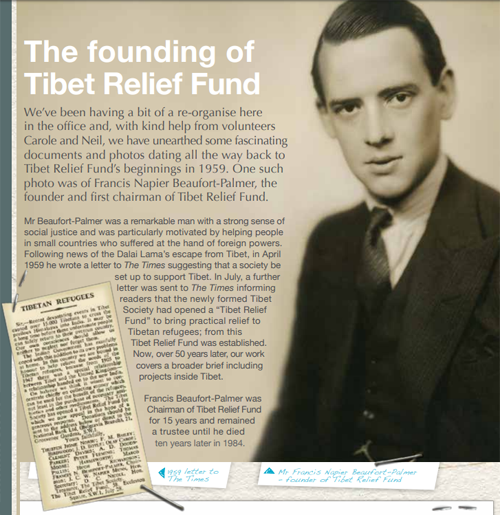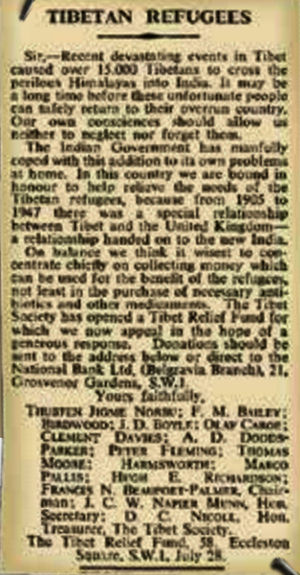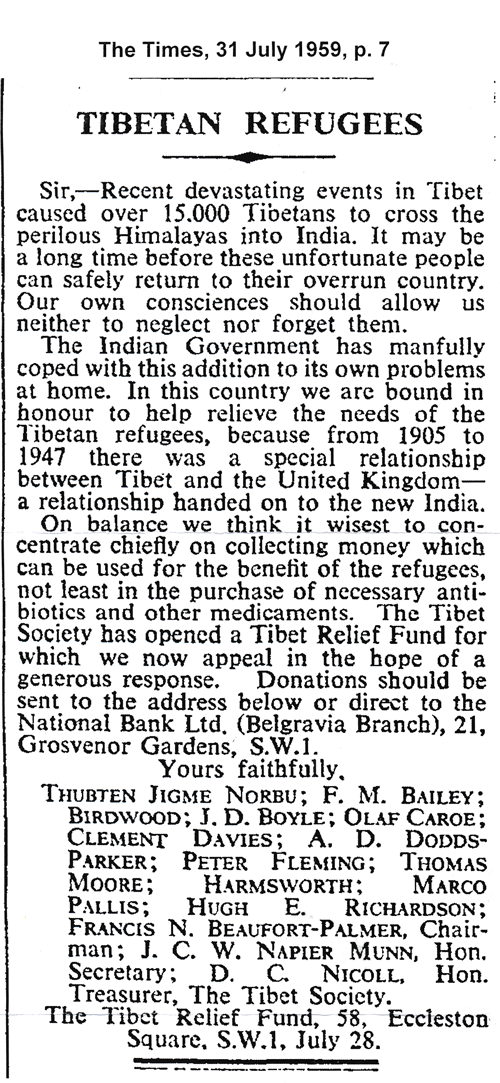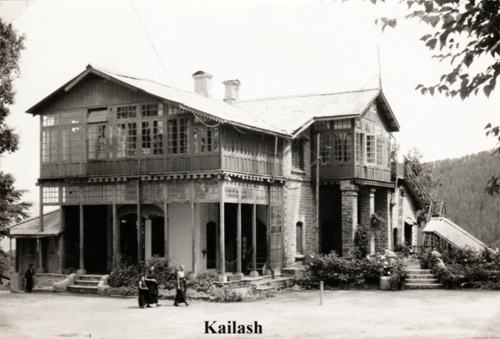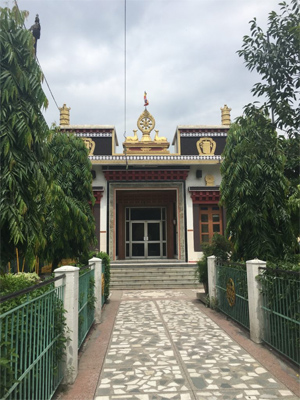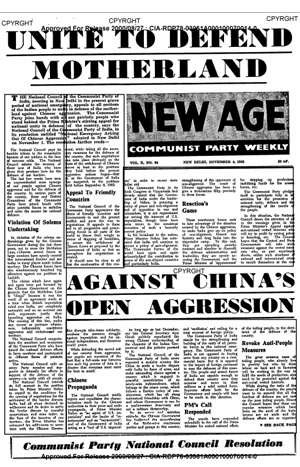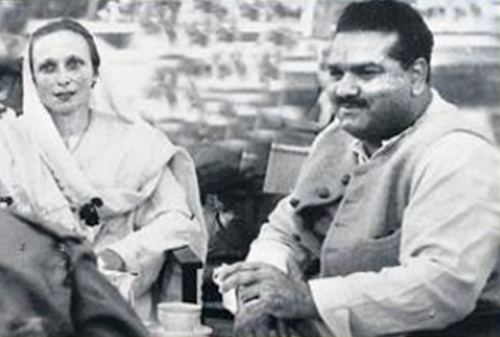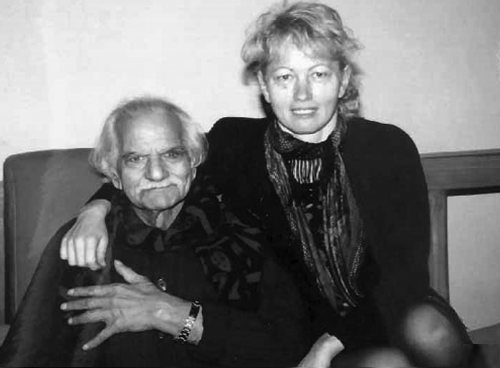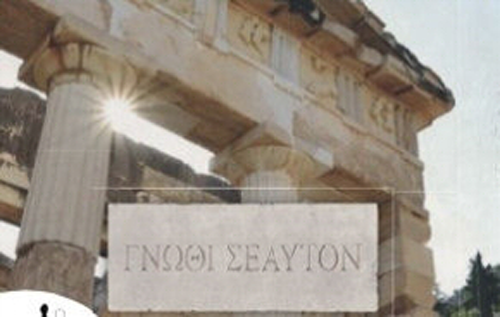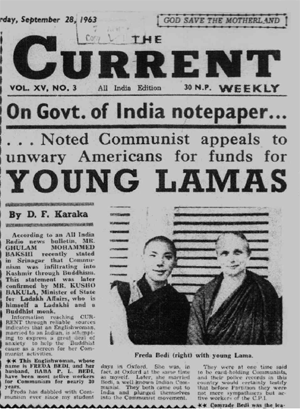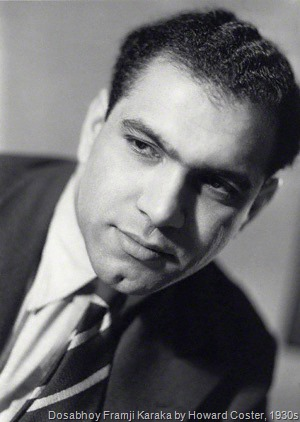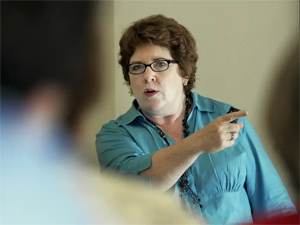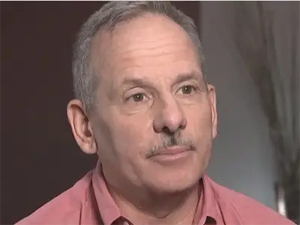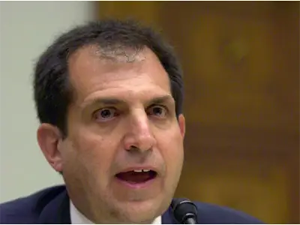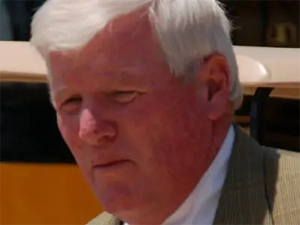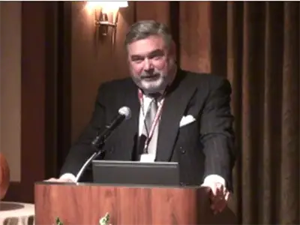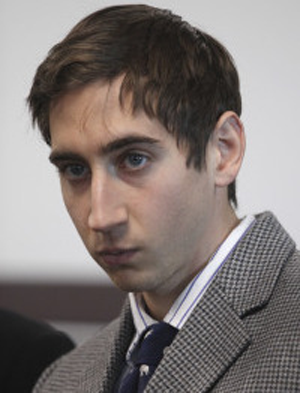The American who had Nehru’s ear: Recently declassified papers reveal the role of Solomon Abramovich Trone, a personal advisor to India’s first prime minister, in charting the direction of the economy in newly-Independent India.by Rakesh Ankit
May 05, 2017
Two years after India’s independence, Solomon Abramovich Trone, a former director of the storied General Electric (GE) came to India and became a personal advisor on economy to Jawaharlal Nehru, joining an extraordinary band of people who participated in state-building after Independence. His memorandums to Nehru on planning, a product of Trone’s extensive tour of the country, in their observations on institutions and places provide an unlikely insight into the early days of Independence; unlikely because planning in India is associated with Soviet influence, not an engineer from the home of capitalism.
“Modi sends Soviet-inspired Planning Commission Packing”, ran a headline in The Wall Street Journal (India) on August 18, 2014. Two days later, The New York Times proclaimed the end of “An experiment with Socialism”. These are just two examples of the words and sentiments that greeted the demise of the Planning Commission and its substitution by NITI Aayog. They reflect the popular understanding of the commission as a “Soviet-style behemoth”.
Even in academic literature, when the inspiration(s) behind Nehru and his Planning Commission are enumerated, the usual suspects are turn-of-century British Socialists: G. B. Shaw and R. H. Tawney, the Fabians, Sidney and Beatrice Webb, Soviet Russia from the time of Nehru’s visit in 1927 and the British Labour Government from 1945. (Brown, Nehru, YUP: 2003; 239)
But advice to Nehru came from far and wide. In September 1946, days after taking over as vice-president and member, external affairs, of the interim government, Nehru read a note from P. C. Mahalanobis, containing reports of his tour to Canada, UK and USA—not the usual suspect, the USSR. Mahalanobis spent time at the Statistical Commission of America and attended scientific conferences in the UK. At both places, he found “a friendly attitude and a general desire to help” and, upon return, made concrete suggestions to take advantage of this. One was a central statistical organisation with a focus on planning. In August 1947, both an official mind (Tarlok Singh, ICS) and an unofficial (Manu Subedar) prepared elaborate notes on the machinery and mandarins for planning.
In May 1949, Dr. Stanley Jones, an American missionary who had visited India many times and knew Gandhi, sent a comprehensive letter to Nehru after his return from a tour of Indo-China, East Asia and China. He took the letter and the advice it contained seriously enough to share it with his provincial premiers. Reflecting upon the rise and fall of Chiang Kai-shek and his Kuomintang party, Jones wrote thus:
Congress forestalled Communism through their wise radicalism but will the Congress go the way of the Kuomintang? Will it hesitate about getting the land back to people? Will it tolerate bribery and corruption among lower officials? Will it try to save capitalism by insisting that profit-sharing be a basic principle of industry? A wise radicalism now will be true conservatism then [as] it will take the wind out of the sails of both the Socialists and Communists. (H.K. Mahatab Papers)
Jones’ views were, of course, not wholly applicable to India but he was echoing, in a sense, what Nehru himself held deeply and more forcibly. In a note accompanying Jones’ letters the prime minister remarked to his provincial premiers:
There is a risk for us to be complacent...We do not show a sufficient awareness of the swift currents that are convulsing Asia at present...The real problem lies behind Communism. It is an economic distemper coming at a time when political consciousness and expectations have been roused...Agrarian problem is first in priority in India...Socialists carry on petty agitations and satyagraha...Most people think in terms of the election to come...Congressmen are often static...Our contacts with the masses diminish...We [have] taken them for granted... Communism attracts idealists as well as opportunists. Because there is an element of idealism in it, it draws earnestness... Those who are impelled by a faith in a cause can seldom be crushed by superior force. They can only be defeated by higher idealism and a capacity to work for the cause (H.K. Mahatab papers).
The presence of Solomon Trone (1872-1969) alongside Nehru in late-1949 has gone largely unremarked, an exception being Michael Brecher (Brecher, Nehru, OUP: 1959; 515-16). Trone’s life provides an alternative vantage from which to see the birth of planning in India. Born in Latvia in 1872 to Jewish parents, he took part in the 1905 Russian Revolution. An engineer by training, Trone migrated to the US in 1916. There he ascended rapidly in the echelons of GE and became a director in 1931. In the 1930s, he was a key figure in the GE-led electrification of Russia and creation of the Dnieper power-station. Later, he was an advisor on industrial development to the Kuomintang government in 1940 and a member of the Allied Reparations Commission in 1945.
Trone came to India in the autumn of 1949. Between September and November, he wrote five comprehensive memorandums. After this, he became an economic adviser to the Israel government. Having come under a cloud during the McCarthy era because of his associations, Trone moved to London in 1953, where he died in 1969. He was recently celebrated as The American who electrified Russia in a film by Michael Chanan of Roehampton University, London.
Trone was invited by Nehru who set out the background in a long letter to his finance minister John Mathai on September 13, 1949. He “wanted men with wide experience and ideas”. No one in India had “big experience of rapid development of a country or the ideas for it except in a limited or theoretical way”. Trone had “just that experience in very different environments–the US, Russia, China, [and] Japan”. Nehru had consulted “large numbers of people about him and every single report was that he was a very exceptionally able man”.
The impression he himself got from Trone’s memorandums, as we shall see, confirmed this and Nehru thought he could be of “the greatest use”. He wanted Trone “to stay for a number of years” (John Matthai papers). Right from his work in the Congress’ National Planning Committee of 1938 to the Interim Government over 1946-48, Nehru had felt the need “for a full [economic] picture” especially “so that no money need be wasted”.
The plans made in this period—from Sir M. Visvesvaraya’s 1936 initiative in Mysore and Congressman Syed Mahmud’s 1938 plan for provincial reconstruction in Bihar, to Sir Henry Knight’s food plans during the Second World War years, to the famed 1944 “Bombay Plan” by a group of industrialists, and the post-war department of planning and development that comprised General T. J. Hutton, Sir Akbar Hydari, Sir Ardeshir Dalal and H. V. R. Iyengar (ICS 1925 and RBI Governor 1957)—were to Nehru:
...hardly planning, from a national point of view [but] departmental planning, provincial planning, planning in fits and starts and more or less industrial planning...just a large number of separate schemes and projects which have little relation with each other...no common outlook, no clear objective, no coordinated approach.
Moreover, there was little consideration of what he liked to call “the human aspects of planning, that is, unemployment”. Nehru envisaged plans as “a popular appeal to the people—something big and far reaching that enthuses and draws out the best from everyone”, including the capitalist class. Trone’s memorandums were not made public then as they dealt, in Nehru’s words, “rather frankly” with the state of the economy. They are available now at the Nehru Memorial Museum and Library, New Delhi in the P. N. Haksar Papers (III Instalment, Subject File Serial No. 187) and give a detailed account of the economy in 1949—the year of currency devaluation and food and foreign exchange shortage.
Against that background, it was “axiomatic” for Trone, as he noted in his first memorandum of September 12, 1949, that the Indian state had to emerge as a producer of basic goods and services as well as a regulator of private and provincial undertakings. Moreover, for coordinated growth, a national industrial plan with a “clearly defined singular social purpose” had to be formulated. This planning of production and regulation could only be made compatible with democracy by delegating authority and responsibility.
Trone began by reminding Nehru of something we would do well to remember ourselves; that in the last century planning had been undertaken for different purposes in different contexts. Between the late-1920s and mid-1940s, the Soviet Union began the production of heavy machinery for manufacturing and defence with a concomitant neglect of consumer goods, Japan produced a plan for cheap export-oriented goods with a resulting neglect of domestic markets. The military complex in Nazi Germany was planned, too. Before any suggestions for planning, though, Trone had strong words for the way the economy was organised. First, government departments appeared as “watertight compartments without organic unity of purpose”. Second, without an overall plan, it seemed impossible in a country of India’s size and diversity to attempt any planning provincially, especially industrialisation. The crying need was for “a man with power and authority as coordinator to unify and pursue a common purpose” (Memorandum No. 1).
Citing the Central Electricity Commission (CEC), Trone remarked that it was an advisory body with about 70 engineers. But the bulk of big engineering work, for instance, the building of the Bhakra power plant, was being done by foreign consulting engineering groups. Trone wanted active participation for CEC engineers in future enterprises so that the government could develop its own specialists and eliminate the expense on foreign consultants. But the most important point was, Trone found, “responsibility divorced from authority”. Every action by a local official responsible for results had to be cleared by the Secretariat. Even in cases where specified sums for specified work were allocated, expenditure within the allotment had again to be approved.
This was a problem not unique to India. In America, the creation of a Tennessee Valley Authority (TVA) and in England, the Electricity and Transport Board, had compelled governments to devise new machinery to unite responsibility and authority.
Trone began a two-week survey of major industrial establishments in Bengal and Bihar. He visited the office of the Coal Commissioner, Geological Survey of India, Titagarh Paper and Jute Mills, and Damodar Valley Corporation (DVC) in Calcutta. In Jamshedpur he went to Tata Steel (then Tisco), Indian Cable Company, Agrico, Indian Steel and Wire Products, Tinplate Company, Tata Locomotive and Engineering. In Asansol it was the Aluminium Corporation of India, in and near Dhanbad, the Fuel Research Institute, Indian School of Mines, Tata Colliery, Burrakur Coal, and the fertilizer factory in Sindri. In Giridih he looked at the mica industry, railway collieries and coking plant, and in Bokaro the railway collieries and the site of the power plant for DVC.
Upon his return on October 4, 1949, he wrote a detailed memorandum. The contents read familiar to a student of Indian industrialisation. Trone saw the power of local authorities limited to a degree incommensurate with production, economy and efficiency. He found managerial bodies laden with responsibilities, but real authority was vested in the ministries and secretariats. Certain paper patterns, created or inherited in New Delhi, had become inflexible and ground conditions were made to conform to them in a way that reminded Trone of the old Greek story of Procrustes’ Bed. Trone was blunt in his report to Nehru: “If your government expects results, the authority to act and to change along with changing conditions must be on the spot”.
This problem was compounded by the fact that the central authorities—ministers and secretaries—seldom visited production sites and when they did, were not around long enough to acquaint themselves with conditions. At the Bokaro collieries, labour was living in conditions unfit for man but local managers had neither authority nor money to create new settlements though the colliery paid large sums to the Mines Welfare Fund for the purpose of improving labour conditions.
Trone worried that such conditions fed agitation as industrial labour fluctuated between factory and farm—a condition he knew well from China and pre-revolutionary Russia. Unsurprisingly, labour productivity was abysmal. The major stop on Trone’s tour was DVC. An autonomous agency set up in March 1948 under the DVC Act, its engineering programme comprised eight multi-purpose storage dams with hydroelectric plants, two additional hydroelectric plants, a steam power plant at Bokaro, an irrigation barrage, canals, a 145 km-long navigation canal, and a power transmission grid.
More complex than the TVA, this first multi-purpose project in India was expected to have a far-reaching impact as it was in a mineral-rich region akin to the Ruhr Valley in Germany and Donetsk Basin in Russia. At the time of Trone’s visit, DVC was facing three key obstacles.
First, there was no qualified and experienced chief engineer. Trone recommended getting someone from abroad. Second was the steel in the design for the Bokaro power-house, by GE along with the Philadelphia consulting firm of Kuljian. Going by American practice, they had incorporated rolled steel in place of fabricated steel. But rolled steel was not easily obtainable in India. The shortage of dollars, especially after devaluation, had prevented the import of American rolled steel. The quantity in question was about 6,000 tons, of which GE was providing 1,200. The remainder, if not imported, was to be fabricated indigenously. The choice was between time and money. Rolled steel from America came at $210 per ton with a delivery time of five months via Calcutta. Fabrication in India meant a delay of 18-20 months.
According to the DVC master plan, the first boiler at Bokaro was to arrive in June 1950 and the first turbo-generator in January 1951, with the powerhouse to be ready by the end of 1952. To realise this schedule, steel needed to be at the site by the beginning of April 1950. DVC was staring at a delay similar to the fertilizer factory at Sindri, caused by paper-work jammed in New Delhi. The original sin had been that the Bokaro powerhouse design was made in America. Had Indian engineers been present, design, schedule and supply orders could have been adapted.
Third, there was the Konar Dam. In September 1949, construction had not begun nor final agreements for design and engineering made with the French firm working on it. The dam, which was to supply water for the Bokaro powerhouse, was to be ready by the middle of 1951. In each case, Trone found “the autonomy and authority of the DVC to exist only on paper. Decisions rest with Delhi and are delayed”. This feeling was amplified at Trone’s next stop, the Sindri Fertilizer Factory. He reiterated that such large-scale undertakings “cannot be directed from New Delhi” and anticipated problems that arose a year or so later, when the plant was ready. No long-term plan existed for the coke and gypsum requirements or ammonium sulphate disposal. Secondly, he did not find any technical and administrative personnel. It is a tribute to Trone’s command of local conditions that he suggested the practical solution of coking coal from nearby Giridih instead of then ongoing negotiations with the comparatively far-off Indian Steel company (Asansol).
This question of raw material supply led to a more fundamental challenge: the Geological Survey of India’s limited knowledge of existing mineral sources. No drilling equipment was available to it, the whole of India had no more than three-four diamond drills, the geophysical department was underdeveloped, and hydrological studies non-existent. A few Indian geologists who spent a year or so in the US and a German geologist made up the whole of the Geological Survey. The Indian School of Mines and Applied Geology was little better, with about 170 students. From his experience, Trone knew industrial development went hand in hand with geological knowledge.
A rare example of this was the Aluminium Corporation at Asansol where the entire process of extracting aluminium from bauxite was concentrated on one spot. Yet, at the time of Trone’s visit, only 33/48 furnaces were working and the plant usually shut down for two months for repairs. Some 1,500 men produced 2,500 tons of alumina and 1,000 tons of aluminium over ten months—much lower than the mill’s rated capacity. It got a subsidy of Rs 900 per ton of aluminium. Trone grasped the need to enhance aluminium production in India, since it could to a large extent replace copper, a scarcer item. He argued that if cheap power, bauxite and soda could be brought together at one spot, as in Asansol, there was no reason why cheap aluminium could not be produced.
Any attempt to answer this question took him to planning. In 1949, planning in India was in a chaotic state: “at best, provincial and even then on a departmental basis”. Trone was clear about his vision of a broad, non-political planning effort in his second memorandum dated October 4, 1949:
I propose that a small central planning agency be set up without delay...directly attached to the PM...It should consist of a very few members, selected with the utmost objectivity and care for their experience, their background and their acquaintance with planning. This agency could evolve a unified national plan...fix priorities, coordinate activities, overcome bottle-necks, and transform plans from paper to reality.
Trone also had some advice for Nehru before he embarked on his maiden US trip. It was obvious that no country could indefinitely pay for large imports of technical equipment and the first objective for India, therefore, was self-sufficiency in iron and steel, tool-making and hydroelectricity. Trone believed America would be interested in a democratic, developed India—given Chiang-Kai-shek’s defeat by the communists in China—and willing to give India self-liquidating loans with as few strings attached as possible. Trone advised Nehru to seek a loan to cover steel mills, power generation and tool-making, apart from ensuring DVC’s requirements of a chief engineer. This would allow Indian personnel to work closely with Americans and benefit from the experience. Trone had little doubt that DVC and the steel and electricity plants would have a ready market that could easily pay off US debts.
After eastern India, Trone turned his thoughts to the south, central and western provinces of Bombay, Mysore, Travancore, Madras and the Central Province. He was in these areas for three weeks, and went to industrial establishments and cottage industries, met cabinet ministers and bureaucrats, addressed engineers and chambers of commerce, discussed matters with labour leaders, academics and the press and, in Mysore, met Visvesvaraya and Mirza Ismail. The tour yielded a typically detailed memorandum on November 21, 1949. Trone was struck by “the achievements of the former benevolent [princely] government of Mysore” and “the educational facilities in [princely] Travancore”, observations that ring familiar even at this distance in time. He was also struck by “primitive agricultural methods” and “economic consequences of caste and sub-caste including one case where, in manganese mines near Nagpur, while water was sparse, each sub-caste had its own”.
Trone organised his report by provinces and began with Bombay. The textile capital of the country disappointed him with its working and living conditions for labour: “worse than Calcutta and Bihar’s coal region”, with “understandable low production and discontent”. This, to Trone, was one of the reasons why the much-touted prohibition law was not working in Bombay as scarcity of consumer goods left workers with “spare cash even from his small earnings that he drinks and gambles away”. It was a lose-all situation: “the loser is the state in money and in health of its poisonous-liquor drinking population; the gainer is the black-marketeer”. Here, Trone drew parallels with the failure and harm of enforced prohibition in the US and argued that prohibition succeeded gradually only if the state provided substitutes for drinking in the forms of better housing, schools, recreation centres, etc.
In Mysore, Trone felt a “discrepancy” between the “fine outer appearance of the state—its buildings, roads, hospitals, educational and scientific institutions, fine irrigation dams, public gardens, all inherited from the past, and the present state of its industries”, with the sole exception of the Jog Falls. There he saw “four 18,000 KW [18MW] turbo-generators of English make being installed by first-class Indian engineers without foreign assistance”. Mysore was a model-state with respect to developing hydroelectric energy. On the back of this, the state was planning fertiliser, cement and acid plants, an extension of the Mysore Iron and Steel works, trolley buses in Bangalore and railway electrification. To Trone, a great believer in national development, these projects were “schemes that try to make Mysore self-sufficient in all respects and overlook the bigger unit—India. The economic justification and prospects for self-liquidation of these projects, if executed, are very questionable” (Memorandum No. 3).
In Travancore, also one of the more progressive states, Trone noted the well-built and maintained Pallivasal hydroelectric station and Alwaye Fertilisers and Chemicals Ltd. Nevertheless, some all-India ills were present here too: production below capacity, mechanical troubles, foreign exchange requirement for imported machinery, superfluous labour and, above all, correspondence with New Delhi. The factories had “a special man there—a pusher—to hasten procedure”. It was in Travancore that Trone found his arguments for all-India planning. The Indian Aluminium Co. at Alwaye, a subsidiary of the Aluminium Ltd. Group of Canada, had first-class engineers and equipment but no rolling facilities. The aluminium produced went to Asansol. On the other hand, the latter needed a full overhaul of its infrastructure. A third aluminium plant at Muri in Bihar could not reduce alumina to aluminium for lack of equipment and sent alumina to Alwaye.
As Trone put it, “One need only look at the map to see how uneconomical the whole process from ore to rolled product—Muri-Alwaye-Asansol—must be”. Aluminium production in India was only 3,500 tons a year, regardless of the subsidy for producers.
From Travancore, crossing the Nilgiris, Trone reached Madras, where the issue was power shortage. The province had three government-run hydroelectric stations: Pykara (43 MW, est. 1933), Mettur (40 MW, 1937) and Papanasam (21 MW, 1944), and was in the middle of a six-year development plan (1945-51) that envisaged four new plants. Here, for the first time, he visited a village development scheme and pronounced a harsh judgement on the hand-spinning and hand-weaving cluster: “Aside from sentimental value, there is no economic future whatsoever”.
For him, modern cottage industries as in Japan could be an instrument of growth but India was better off planning outfits like the highly mechanised West India Match Company in Madras where 1,600 workers produced three million boxes of 60 matches daily. Trone’s final stop was Nagpur. The Central Province appeared rich in natural resources but poor in terms of infrastructure and planning. On the one hand, a poorly planned thermal plant was being set-up at Khaperkheda, on the other, manganese mines in the province produced 400,000 tons of ore yearly with primitive manual labour.
Trone also visited the Hindustan Aircraft Ltd. in Bangalore. The “unsound atmosphere” he found merited a separate memorandum and this was the report considered too embarrassing to be made public at the time. Trone himself suggested that this memorandum “should not be widely circulated” (Memorandum No. 3 (a)). Hindustan Aircraft had started as a private enterprise in 1941 with equipment from China. Under the management of the American Air Force, it had developed into an enterprise for aircraft overhaul and repair. At its peak, it did about 300 engines and 100 frames per month and employed 14,000 people. In 1949, it was jointly owned by the Union government and Mysore government. It had about 6,200 workers, a technical staff of about 100 and twice as many supervisors. Reflecting the prevailing environment of transition, the general manager was Indian, while the production controller, chief inspector, commercial manager and manufacturing superintendent were English and the factory manager, rail-coach factory superintendent and airline overhauling superintendent were Americans. In addition, about 20 Indian engineers held responsible positions.
The factory now rebuilt about 35 engines and six frames per month and had started producing rail-coaches. In addition, a prototype of an Indian airplane was being made. Nevertheless, the plant was more than one-third idle and working at a loss. The Indian engineers confided in Trone about the “strains between foreign and Indian staff”. As a result, regular customers like Airways India, Bharat Airways, Deccan Airways etc., were setting up their own repair shops. They did not complain of the engineering service as much as “uneven treatment, high prices [and] priorities given to preferred customers”. Trone left with “an uneasy feeling” and suggested an investigation, given the importance of Hindustan Aircraft in the country’s development.
So what were the general observations that convinced this former GE director that planning was the right, indeed the only, way forward for India? Contrary to usual analysis and his own expectations, it was a feeling of “general let-down and apathy” that led Trone to suggest the initiative.
In the mind of the people Congress sways in its economic and political policies and this estranges the industrialist, labour, the middle class [and] the socialist. The peasant seems to be outside the active field...The general opinion seems to be that the administrative machinery is not in the hands of the best men but Congressmen (Memorandum No. 3).
The usual “black features” of an economic crisis—corruption, falling production, rising unemployment, growing inflation—were in evidence. More seriously, relations between industry and government had deteriorated, and ministerial and secretarial interference in production and regulation from afar, often without knowledge or understanding of the process and problems, was assuming chronic proportions.
Life has found an unhealthy way out. Industries now have men at the centre whose function it is to push their interests...We, in the US, complain of the existence of “lobbies” in Washington that try to push their special private interests before public interests. But that a state-owned industry should need similar devices in its dealings with its own government... (Memorandum No. 3)
Consequently, few government industries were working well. Trone reckoned Mysore Iron and Steel could dispense with four-fifths of its labour and Alwaye Fertilisers and Chemicals with one-third. Managements at both places were keen to do so but prohibited by government. The answer for Trone was planned creation of more industries to generate employment. This inevitably led to mechanisation, a process both costly and slow. Moreover, an abundance of cheap labour reduced its economic value, especially where the time element was not important. Labour resisted mechanisation, fearing more unemployment.
The way to square this circle was to assure labour that “growing industrialisation will absorb the unemployed. England had to go through similar experiences, when destruction of machinery was a policy used to fight unemployment”. Efficient production was possible only by conscious cooperation between labour and management but in India Trone saw “quite the opposite”.
A great obstacle in the way of cooperation was the absence of opportunities for self-development and advancement—universities, libraries, parks and cinemas—for workers. For Trone, these had to be created, as much for generating production as for maintaining peace. As he put it, “sons of workers must be taught alongside boys from [the] middle class”.
His observations brought Trone to tie up his recommendations in a final memorandum on “Planning and Planning Machinery”, dated November 21, 1949. He brought up the example of England under Labour. A “mixed economy” like India, political power in England was in the hands of a party with a “social ideology”. The resultant policy had been to utilise natural resources and provide full employment for the increase of national income, which was then equitably distributed as well as suitably invested in capital goods, housing and agriculture that, in turn, contributed to generate a bigger national income. In India, Trone warned Nehru, the Congress party and government, “not being homogeneous in social structure nor in ideology”, was slipping from its pledge to work towards a social democratic society with full employment, growing standard of living and increasing national income.
Instead, he saw powerful industrial groups on their way to gain influence in government. “By withholding investments, closing factories, refusing to pay taxes on past profits thereby deepening the existing economic crisis and creating more unemployment and unrest”, these groups, Trone felt, had “already almost succeeded in forcing government into acceptance of their laissez faire policy”. Simultaneously, they used inflation to make quick profits in speculation and quick turnover in trade.
Trone conceded that this private sector might bring new investment in consumer goods, given the chance for quick profits but doubted that they would have a substantial impact on the economic crisis or unemployment. He argued that for fear of a possible reversal in government policy, it would be reluctant to go fully even into consumer goods. It was an axiom with him that free capital in India—even if available in sufficient quantity—would not seek new investment in capital goods industries as they took years to develop and more before they yielded profits. Indian capital then was, basically, “trade capital seeking quick profits and quick turnover”.
Secondly, industrial labour in India, as in China, had not lost its connection with the village. For Trone, existing labour conditions, coupled with unemployment, must create labour trouble and unrest and then carry it into the village, where a disintegrating economy was itself the basis for growing discontent. Given his experience with the Chiang-Kai-shek government, Trone saw many analogies between China and India.
Trone urged Nehru to take the lead by investing in capital goods, without which neither development of natural resources nor full employment was possible. Besides resources and manpower, capital goods demanded money and in India it could only come from either foreign exchange or in the form of long-term cheap loans aided by exports. Trone envisaged an expenditure of about $500 million over five-six years for two steel mills of 500,000 tons each, one electrical plant generating 300 MW per year and a machine tools industry.
He believed that “a common spirit of sacrifice and hope” that mobilised “all inner reserves” could generate “creative power” as in Soviet Russia, Hitler’s Germany, militaristic Japan and Labour’s England. For Trone, like many Americans of his generation, India was the last big country in Asia with a chance to grow into a social democracy and “no sacrifice was too great to make this chance a reality”.
The basis for this was to be an “all-India plan of a managed mixed economy with a wide field for private enterprise sufficiently controlled not to interfere with plan purposes in order to mobilise natural resources and manpower to create common wealth and distribute it equitably”. The first step had to be a new village economy around a reorganised and cooperative agriculture and cottage industries by pooling land, existing equipment, farm hands and working animals.
This required land reforms which for Trone could not be achieved without adequate planning. Reiterating his vision of a social-minded body that would consist of “an engineer, an economist, an administrator, a businessman and an expert on rural economy”, Trone insisted on it being invested with sufficient authority and autonomy, by being responsible directly to the Prime Minister. This national-level team would be assisted by regional planning boards and constituent units. Trone argued for a two-fold exercise of authority by this commission: control of scarce materials, export, import and exchange, price, investment and transport, and long-term plans in agricultural, industry, consumer goods, transport and communications, public health, education and recreation, scientific organisation, research and development in technology and public administration.
Trone repeatedly cautioned against over-centralisation and wanted the material and financial targets of the Planning Commission to reflect the objective situation in resources and requirements as well as regional appraisals and aspirations. State units and industries, in light of their capacities, were to be free to make alternative suggestions. India’s diversity and federal political structure had to be kept in mind but provincial cooperation was to be secured through a cadre of experts, financial and material assistance to provinces and exercise of constitutional powers by the centre. More than that, Trone wanted to ensure “the interest, enthusiasm and cooperation of people” in the working of the plan and, for this purpose, suggested that various means of communications, especially radio, be employed to communicate results achieved and issues outstanding. After all, the most important guarantee for any success was “an enlightened public opinion and continuous popular interest”.
The nub of Trone’s advice, a Planning Commission, came through in 1950. Similarly, the first plans saw his basic thrusts at village cooperatives and heavy industries being realised. The Planning Commission is today derided as the folly of a man, his vanity and dogmas. But in the aftermath of the Second World War, a broad international consensus existed on the role of the state as a creator, provider, manager and distributor of national economies. Nehru especially highlighted the experience of the “entirely dissimilar” Russia and Japan. With “little social capital and little help from outside” they industrialised themselves, they increased their production and raised their standard of living, because “both planned with the greatest thoroughness...and in a large measure achieved them within a remarkably short span of time”.
In 1949, he sent Mahalanobis, chairman of the Committee of National Income, to a conference on national income in Geneva. The proceedings emphasised developing “social accounting” (Mahalanobis papers), then being done in nine countries, two of which could be called “socialist” but none “communist”—France, Netherlands, Denmark, Sweden, Canada, Australia, the UK and the US.
In June 1954, Nehru sent Mahalanobis to the West again to meet a veritable Who’s Who of the “economic mind”. They included the Norwegian Ragnar Frisch and the Dutchman Jan Tinbergen (first winners of the Nobel prize in economics in 1969), the French Marxist Charles Bettelheim, the Polish economist Oskar Lange, the English trio of J. R. N. Stone (Nobel in economics in 1984), Joan Robinson and P. M. S. Blackett (Nobel in physics in 1948) and, in America, Simon Smith Kuznets (Nobel in economics in 1971), Solomon Fabricant, Paul A. Baran and the Harvard duo of Abram Bergson and Robert Dorfman.
In July, Mahalanobis was told in Moscow that Indian planning “need not, cannot and must not be a mere copy of Soviet planning”. National economies are complex creatures and as long as India remains a democracy where the desires of a few contrast with the deprivation of many, there will remain a desperate need for planning and regulation. The democrat that Jawaharlal Nehru was, he never forgot that “when government depends on the goodwill of large numbers of people”, planning was imperative to “offer them [an] objective, [a] clear picture” so that they do not “have a sensation of being asked to labour and to suffer with no promise of reward in future”.

